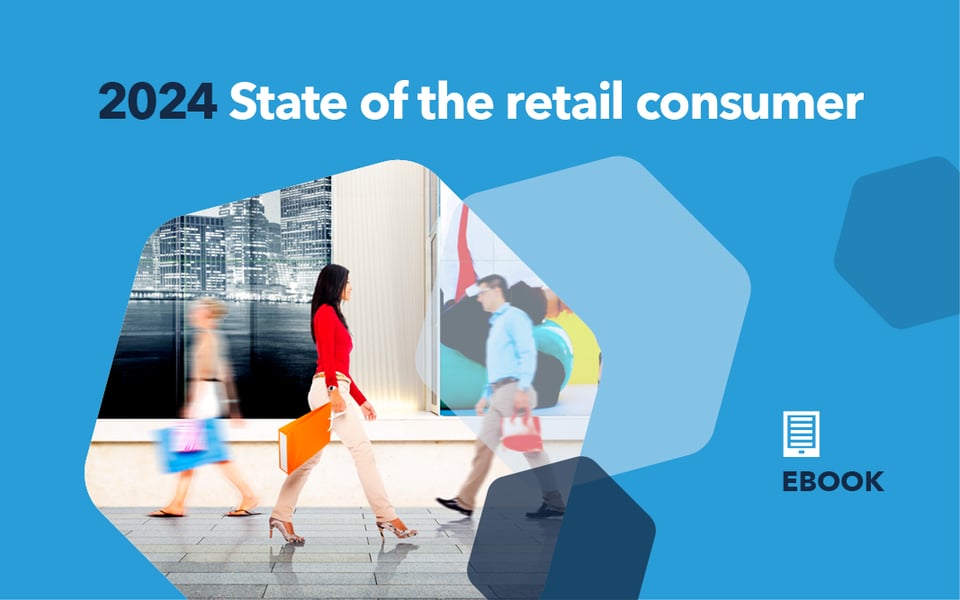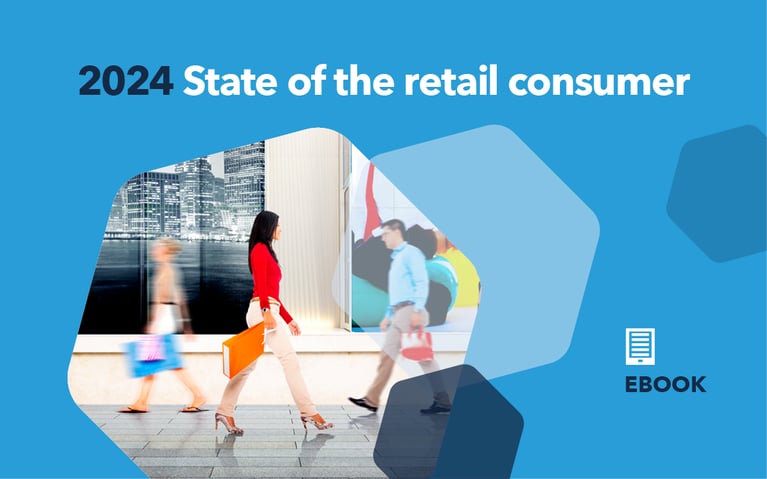This is an excerpt from Cart.com’s newest eBook “2024 State of the retail consumer,” an in-depth look at the consumer mindset, spending, trends, behaviors, desires and more – and best practices and strategies to engage customers. Check out the full eBook here.
Part 2: The platforms, channels and content shoppers use
Omnichannel shopping has expanded with the growth of technology. Brands must work to provide seamless integration across channels, allowing customers to have a unified experience whether they shop online, in-store or via mobile devices. Additionally, AR and VR innovations help enhance the online shopping experience by allowing customers to virtually try products before purchasing, bridging the gap between physical and digital retail spaces.
Because the number of channels has grown, businesses need to stay ahead of which channels and platforms retail their consumers prefer – and create robust strategies to make them all work together.
Top platforms and channels
To effectively reach target audiences and maximize sales potential, brands must know the top platforms and selling channels for their products. By identifying which platforms are popular, retailers can allocate their resources wisely and tailor their marketing strategies accordingly to better reach their customer base. With the right channels, brands increase their visibility, expand their reach and stay competitive.
Online storefront
70% of the U.S. population shops online1
Digital platforms where brands feature and sell their products. Visitors expect a user-friendly interface, product listings, detailed descriptions and the ability to make secure purchases. Ideally, customers can view product availability, shipping times and costs.
Retail store
45% of consumers primarily shop in brick-and-mortar stores2
Products and goods are sold directly to consumers. Customers can browse, interact with staff and find items that cater to local target market.
Marketplace
61% of Amazon sales are generated by third-party sellers3
An online platform where multiple sellers list and sell their products to consumers. It’s a convenient and centralized shipping experience that offers a vast selection and the ability to compare. Marketplaces give access to a large and diverse customer base.
Mobile app
88% of consumers have at least one shopping app on their phone4
An application developed by a retailer to facilitate shopping and engagement with their brand. It allows customers to browse products, make purchases, track orders, receive personalized recommendations and access exclusive deals and promotions directly from their mobile device.
Social platforms and retail consumers
Social platforms aren’t just for marketing anymore – they’ve become search and selling channels as well. 58% of consumers say they often discover products through social media and 42% say that social media impacts their purchasing decisions.5 Social shopping can act as the entire funnel: Discovery, research, conversion and loyalty.
Platforms like TikTok, Instagram, Facebook and YouTube have created features for selling. For example, Facebook’s Commerce Manager lets brands select checkout methods, shipping and returns for businesses who use Facebook Shops. As the younger generations gain more buying power, retailers will want to strengthen their social commerce strategy and presence. Because even though 50% of all shoppers bought via social media in the past year, that percentage was 73% for consumers ages 18 to 34.6
Retailers looking to expand further into social commerce should start with the most popular. In 2023, the top social platforms for commerce7 were: Facebook, Instagram, YouTube, TikTok, Pinterest and Twitter.
A retailer’s social content will be an important factor in a social channel’s ability to convert. It can effectively guide buyers down the funnel by providing valuable information, building trust and generating engagement. By creating informative posts, product showcases and user-generated content, brands can attract potential customers and spark their interest in the products offered. As users engage with the content, they become more familiar with the brand and its offerings, moving closer to making a purchase decision. Additionally, social platforms offer opportunities for direct communication, allowing brands to address customer inquiries, provide personalized recommendations and ultimately facilitate conversions. By strategically leveraging social content at each stage of the buyer’s journey, brands can nurture leads and drive them toward completing a purchase.
How consumers are searching
Before making a purchase, consumers search and explore products. They discover products in a variety of ways.
In 2023, the top five product discovery tools8 were:
- Internet search
- In retail stores
- Through social media
- Television ads
- Word of mouth
When consumers landed on product pages, the top 10 ways they got there9 were:
- Search engine
- Retailer site search
- Retailer mobile app
- Social media
- Advertisement
- Print advertisement
- Magazine or newspaper
- Text
- In-store QR code
Retail consumers still rely heavily on search engines for discovery and product exploration, making SEO an important ongoing strategy. It also improves the overall search experience, enhances user satisfaction and encourages continued usage of the search engine platform. When brands optimize their website, it ensures that users find the most accurate and helpful results for their queries. Effective SEO practices help increase website visibility and organic traffic, which benefits both users and brands.
Making it all work together – a cohesive and consistent customer experience
Traditional commerce, social commerce, ecommerce and mobile commerce all have a place in the customer journey – especially since no two customer journeys are the same. The walls between channels are disintegrating, with shoppers moving between them as they go from discovery to delivery. Most retail consumers now take a hybrid approach, particularly the younger generations. It may begin with a shopper seeing a product on a social platform, moving to product exploration on the brand’s website and then checking to see if that item is in-store nearby.
Brands must focus on cohesiveness and consistency since 75% of retail consumers expect the same experience from a brand or retailer, regardless of the channel.10
The customer journey
Today’s retail consumer wants a seamless and personalized customer journey that caters to their individual preferences and needs. They’re looking for convenience, accessibility and consistency across all touchpoints, whether online or offline. Other key factors in the customer journey are:
- Transparency and honesty: Consumers want clear communication and trustworthy interactions throughout their journey. In a recent survey, 94% of consumers said they are more likely to be loyal to a brand that offers complete transparency, and 86% said transparency isa key factor in their decision to buy from a brand.11
- Personalization: Shoppers expect tailored recommendations, relevant content and customized experiences that resonate with their interests and behavior. In fact, McKinsey research shows that 71% of consumers expect companies to deliver personalized interactions. And 76% get frustrated when this doesn’t happen.12
- Timely and efficient service: Customers require quick responses, fast resolution of issues and smooth transaction processes. Overall, they want a positive and memorable experience that exceeds their expectations and fosters a sense of satisfaction and loyalty towards the brand. When asked, 92% of consumers said they believed that customer service should respond quickly to questions and problems.13
Content and the customer journey
Today’s retail consumer listens to and relies on their peers, making user-generated content (UGC) a significant influence. For many shoppers, reviews factor heavily into decisions. But it’s not just the review itself, but the quality, rating, overall number of reviews, details in the review and recency. And brands also have sway – their response to negative reviews has an impact.
In 2024, a retailer’s content must align with consumer preferences. Although brand- generated content still has its place, UGC is highly desirable, with 79% of people14 saying UGC highly impacts their purchasing decisions. This includes social media, testimonials, case studies, photos, video content, hashtags, influencer content and more. When consumers are on a brand’s site or social platforms, the top content preferences for learning about products or the company are short-form videos, how-to guides, infographics, social posts, email newsletters, podcasts, eBooks and whitepapers.
The customer experience is clearly central to retail success – and it’s elevated through a brand’s use of channels, platforms and content, and the ability to create a cohesive journey around them. However, another piece of the retail consumer puzzle is the post-purchase experience, which also become critical to brand success over the past few years.
Want to learn more? Check out the rest of our eBook about the current state of the 2024 retail consumer – along with strategies and best practices to amplify your customer experience.
References:
- https://www.tidio.com/blog/online-shopping-statistics/
- https://capitaloneshopping.com/research/online-vs-in-store-shopping-statistics/#:~:text=Many%20consumers%20still%20prefer%20in,and%2Dmortar%20stores%20in%202024.
- https://www.statista.com/statistics/259782/third-party-seller-share-of-amazon-platform/
- https://www.newstore.com/articles/survey-1-in-3-consumers-prefer-mobile-shopping-apps/#:~:text=Overwhelming%20majority%20of%20consumers%20use,than%20those%2045%20and%20older.
- https://media.bazaarvoice.com/Bazaarvoice-Shopper-Experience-Index-Vol-17.pdf
- https://media.bazaarvoice.com/Bazaarvoice-Shopper-Experience-Index-Vol-17.pdf
- https://www.statista.com/statistics/250909/brand-engagement-of-us-online-shoppers-on-pinterest-and-facebook/#:~:text=A%20study%20conducted%20in%20August,by%20YouTube%20with%2010.7%20percent
- https://blog.hubspot.com/marketing/how-consumers-learn-about-products
- https://media.bazaarvoice.com/Bazaarvoice-Shopper-Experience-Index-Vol-17.pdf
- https://media.bazaarvoice.com/Bazaarvoice-Shopper-Experience-Index-Vol-17.pdf
- https://www.business.com/articles/leading-with-transparency/#
- https://www.mckinsey.com/featured-insights/mckinsey-explainers/what-is-personalization
- https://www.cm.com/speed-customer-service/
- https://blog.hubspot.com/marketing/user-generated-content-stats
Subscribe to our emails for the latest industry insights!
By entering your email, you agree to receive marketing emails from Cart.com







